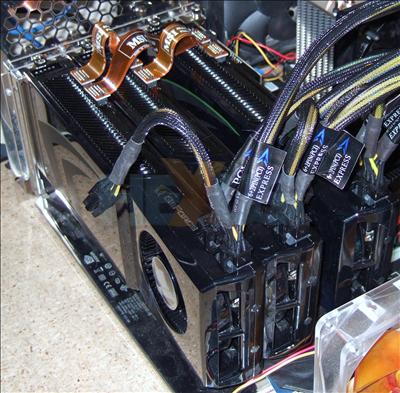Introduction
In our in-depth review and analysis of Intel's imminent Core i7 processors, we concluded that the next-gen CPU architecture is everything that Core 2 should have been.
Despite performance-leading results across a wide range of benchmarks, we found gaming to be the one area in which Core i7 didn't appear to wipe the floor with the older Core 2.
We concluded that the way most games are threaded, if at all, left the high-end Core i7 chips sitting around with simply not enough work to do. So, for gaming, why spend more on a Core i7 part when a Core 2 processor can offer similar performance at a far lower cost?
Well, we've been encouragingly reminded by NVIDIA that Core i7 is a high-end part that's best realised when equipped with the cream of the crop from the graphics world. Of course, according to NVIDIA, that cream of the crop is its GeForce GTX 280 graphics cards configured in SLI.
The result, we're told, is an Intel processor that can finally justify the sheer power of multiple GPUs. To put some real-world figures alongside NVIDIA's claim, we're comparing two high-end systems equipped with three SLI'd GeForce GTX 280 graphics card. One system will be armed with Intel's range-topping Core i7 part - the Core i7 965 EE - and the other will be carrying the old champion - Intel's Core 2 Extreme QX9770.
Let's get started...










